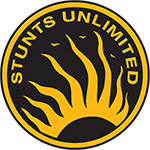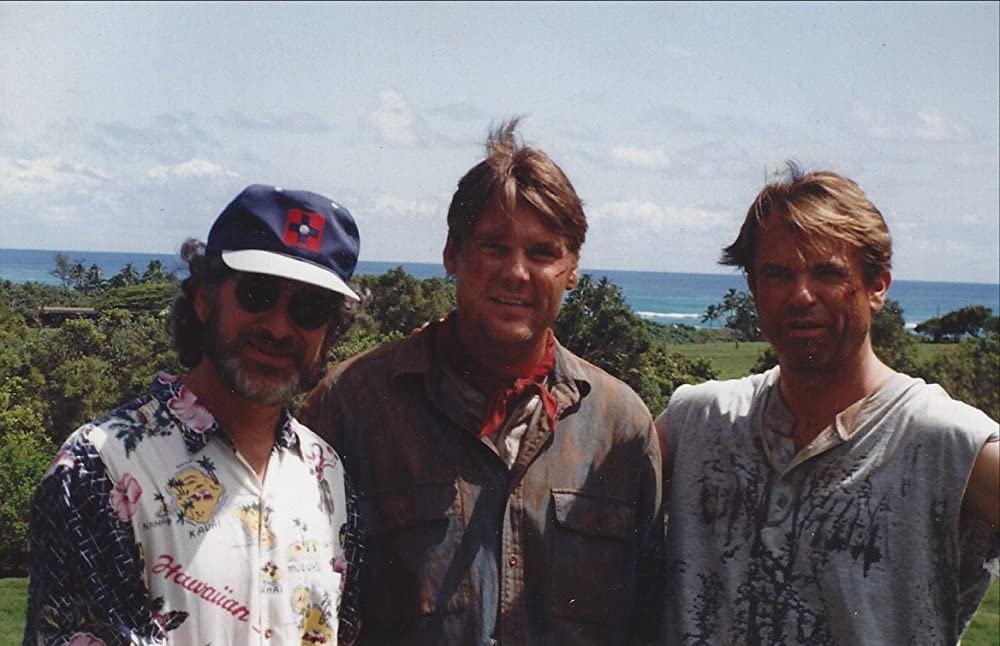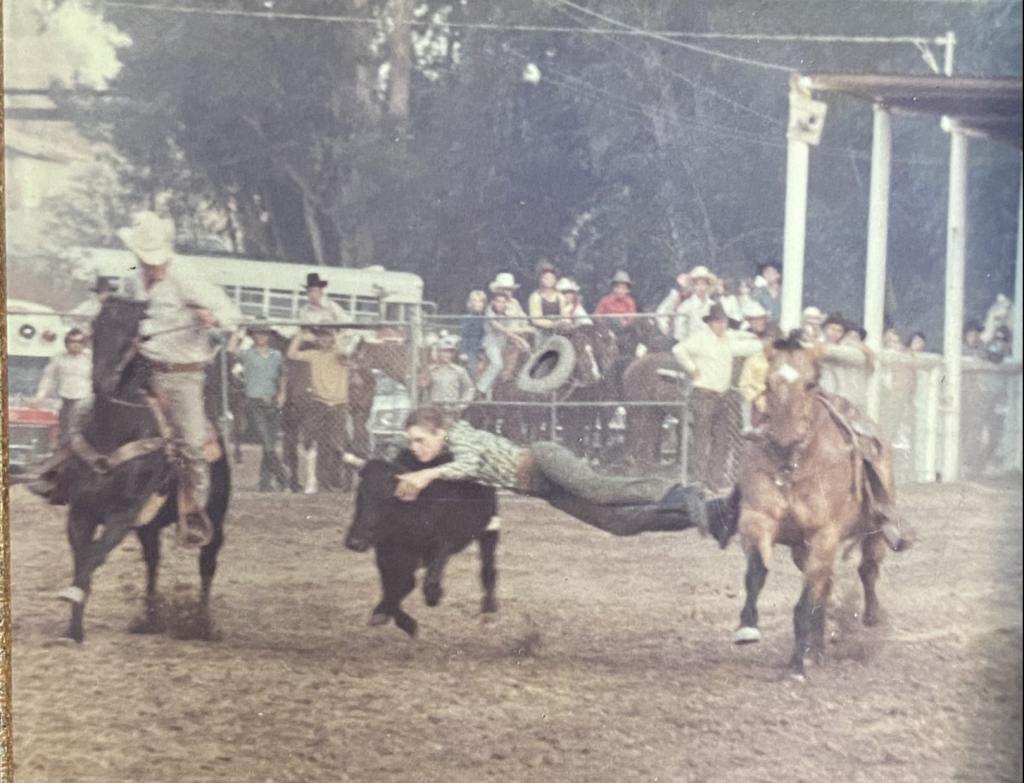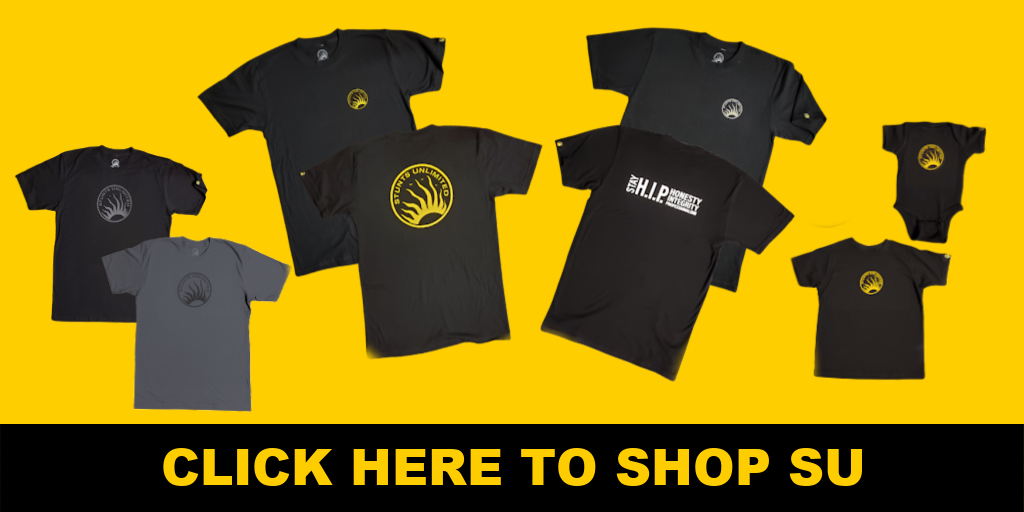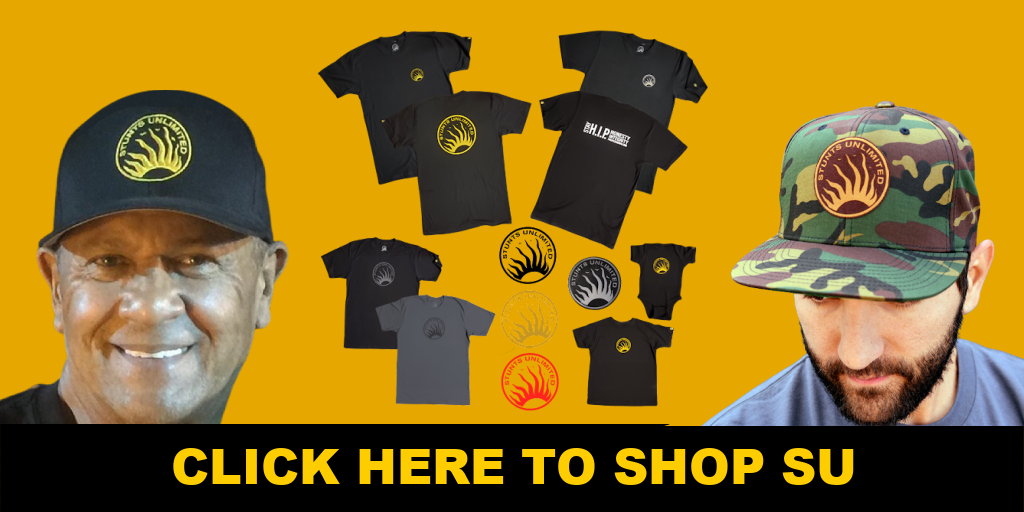 The following is a re-publication of an original blog post from Pietro Ricci of the Luckytownblog that can be read in both Itialian and English here: https://luckytownblog.wordpress.com/2021/09/19/norman-howell-una-vita-sul-filo-del-rasoio-norman-howell-a-life-on-the-edge/
The following is a re-publication of an original blog post from Pietro Ricci of the Luckytownblog that can be read in both Itialian and English here: https://luckytownblog.wordpress.com/2021/09/19/norman-howell-una-vita-sul-filo-del-rasoio-norman-howell-a-life-on-the-edge/
Norman Howell: A Life on the Edge
Your biography states that at fourteen you had a rodeo career going – that makes me wonder, what was your childhood like?
I was very fortunate that I had horses since the age of five and by the time I was ten my father started a junior rodeo association and that was my early education in horse skills. We would practice at the ranch every weekend riding bulls and bucking horses, roping and bull dogging earning me numerous all around champion saddles and trophy buckles. I was also a medal winner in track and field and most valuable player in basketball. All of which set me up for a career in stunts.
While you were growing up, were the movies a big part of your life and do you happen to recall which was the very first movie you ever saw?
I don’t remember the first movie I saw, but there were several films that had a big impact on my life. Mary Poppins (1964) opened my eyes to possibilities and I identified with Dick Van Dyke and his positive attitude. My favorite film of all time, and Kevin Costner’s too, is How the West Was Won (1962). I wanted to be like Jimmy Stewart, traveling in a canoe and surviving in the wilderness with the Native Americans. The next one that influenced me a lot was Blackboard Jungle (1955) with Glenn Ford who stood up to bullies and for what was right and I wanted to emulate that. Another was The Sound of Music (1964) because the children “Climbed every Mountain” to escape from the suppression of the Nazis and rise above seemingly insurmountable challenges. The most influential film that changed everything for me was The Great American Cowboy (1974) a documentary about world champion all around cowboy Larry Mahan, whom I met at our local rodeo in Riverside, California. Mr. Mahan used a strategy of visualizing every ride before he got on the bull and that modeled for me a way to achieve my dreams. Every night I would visualize what I wanted to achieve and the direction I wanted my life to go. It gave me hope for my future and a lifelong tool to prepare for every stunt I perform or direct and any other challenge in my life.
In 1972, at only fourteen years of age, you had an acting part in The Cowboys starring film legend John Wayne. What are some of your fondest memories of being around and actually working with The Duke?
Being on the set, which was located on a mountain top in Durango (Colorado), I was the only young cowboy there and I had a scene to shoot with Duke, so I got to spend a lot of one-on-one time with him – he even taught me how to throw a movie punch like a stuntman!

Director Mark Rydell (left) and John Wayne (right) showing young Norman Howell (in the middle) how to throw a movie punch on set of The Cowboys (1972)
Your stunt career basically started then – what attracted you most about stunts and stuntmen to make you want to become one yourself?
I felt more comfortable with the physical aspect of filmmaking, rather than remembering and reciting dialogue. I was an athlete; it was a natural progression for me. I always wanted to go to the Olympics, being a stuntman was the next best thing and attainable.
You have worked with the most prominent A-list Hollywood actors and directors – I never knew you’d done stunts for Steven Spielberg’s wacky comedy 1941 (1979). How did you land that particular job so very early in your career?
They were looking for young guys who were willing to cut their hair very short to work in the ASO fight scene. They must have cut my hair three times that day! That was the first time I worked for Steven Spielberg and it was the first time they used a techno crane – a telescopic crane that was remotely operated. I also worked for Mr. Spielberg on Jurassic Park (1993), we spent two months shooting in Hawaii and two months on the Universal lot. Steven would line up a shot on one stage and while they were lighting it, he would go to another stage that was lit and ready to shoot. Very efficient. We hung out with Steven during a hurricane in Kauai and we had to hunker down in the kitchen area of our hotel overnight. During the storm it got quiet, so Steven went outside to investigate and a few of us followed to see the eye of the storm – it was totally still and eerie. Kathleen Kennedy, the producer, propped the door open and yelled at us to get back inside. Everyone ran for the door when the wind hit us – Steven got in clean, but several others got knocked down by the wind and had to crawl back to the door!
Following that, you went on to lend your talents and skills to countless 80s classics such as Footloose (1984), Octopussy (1983), Die Hard (1988), The A-Team (1983-1987), Predator (1987), Lethal Weapon 2 (1989) just to name a few. And this is just your 80s oeuvre. I must ask you this: when you were working on those movies, did you have a sense you were making films that would last and become classics?
No, we rarely have any idea of which projects are going to be iconic. I knew Octopussy was big because it was part of the James Bond franchise and Lethal Weapon 2 because the first was such a big hit. You could tell that WaterWorld was something special because of the massive budget and unique storyline, fortelling what is coming to pass now. On a side note, my life and career almost ended on Footloose, Octopussy and WaterWorld to name a few (Kevin Costner saved my life on WaterWorld, but that is a story for another time).
In 1989, Kevin Costner started filming his directorial debut Dances With Wolves which he had a lot riding on. Do you remember how you were made aware of the project and how you got involved with it?
I was contacted to double Kevin on The Untouchables (1987), but I had to turn it down because I was still working on the A-Team at the time. I thought that I had blown it and would never get to work with Kevin again. As fate would have it, I got called by the stunt coordinator of the Untouchables looking for a recommendation for a good horse wrangler in Montana (that’s where they shot the big shoot out on the bridge). I gave them the name of my best friend Rusty Hendrickson and he ended up doing the movie and becoming very good friends with Kevin. So when Kevin gave him the script for Dances with Wolves (1990), Rusty called me and strongly went to bat for me. That got me an interview with Kevin Costner and Jim Wilson.
What I would like to share about this life changing moment in my life is that I suffered from acute social anxiety. I have always known this and worked on it by reading and listening to self help books. When I was fifteen, my mom passed away and I ended up with all her books, one of which was “Riches and Within Your Reach” by Robert Collier. It is my go to audio book to this day when I am feeling anxious.
I wanted this job so badly I took the extra step of seeking the help of a speech therapist to assist me in overcoming being an introvert. I learned how to breathe properly and she gave me the book, “Maslow’s Hierarchy of Needs” which refocused my attention from myself to the goals that were important to me. She really helped me to relax and focus.
The other thing I did to prepare for the interview was to cut together a stunt reel on video, which was new technology and something stunt performers were not doing at the time. I figured it would cut down on the amount of time I needed to talk! During the meeting with Kevin and Jim at Raleigh Studios off of Melrose Blvd. in Hollywood, they watched my video and Kevin kept saying, “You did that? You did that!?! You did that??” And all I had to say was “Yes. Yes. Yes.” Kevin said, “You can double me” and left, and Jim Wilson threw me a football and said, “You are on the team.” That job was the beginning of a lifetime of friendship with Kevin Costner and amazing experiences working on Dances with Wolves, The Bodyguard (1992), A Perfect World (1993), Wyatt Earp (1994), WaterWorld (1995), Tin Cup (1996), The Postman (1997), Message in a Bottle (1998), For Love of the Game (1999), 3000 Miles to Graceland (2001), DragonFly (2002), Open Range (2003), Mr. Brooks (2007) and The Highwaymen (2019).

Norman Howell has worked with, and been friends of, Kevin Costner for more than thirty years. Clockwise: The Bodyguard (1992), 3000 Miles To Graceland (2001) and The Highwaymen (2019).
On Dances With Wolves you not only were in charge of doubling Kevin himself but you also had the role of stunt coordinator – what would you say were some of the most difficult things you were required to do?
The hardest thing to do on that movie, the first time it had ever been done on film I used Native Americans doing an actual buffalo hunt. I went to all the local Indian rodeos in South Dakota to scout for Native American cowboys and gratefully found some amazing bull riders and bronco riders. When they showed up a month later to do the scene, they had all practiced shooting their bows and arrows from riding bareback on their own time because they were so honored by the opportunity, they wanted to do it right.
Once filming was completed, did you get to bring home with you any items from the shoot?
Yes, I took one thing home – I got a buffalo from rocker Neil Young to prepare for Dances with Wolves!
When I heard about the film I wanted to learn about buffalo to increase my chances of getting hired on the project, so I put the word out that I was looking for one. As luck would have it I got a call from the musician Neil Young! Mr. Young had a buffalo that he needed to re-home, but wanted to make sure I was up to the task before he agreed to hand him over.
Neil asked me where I would keep the buffalo, I told him my five acre corral. He said his buffalo runs right through fences, I replied my fence was made out of oil well pipes that he wouldn’t be able to run through it. He asked me how high the fence was, I replied 5 feet and he said his buffalo would jump right over that, so I replied that I would build it taller. Turns out the buffalo was a real people person and kept busting through the fence to rub himself against the neighbors houses and greet motorists on the road. Once I assured Mr. Young that I could contain the curious buffalo, Neil said, “Come and get him!”
I named the buffalo “Mammoth” for his size and where I was when the famous musician called me, Mammoth Mountain. Turns out the biggest lesson Mammoth taught me was that you can’t make buffalo do anything they don’t want to do. Fortunately I worked diligently with this particular buffalo to earn his respect and trust, and it paid off big time. When we arrived on location in Pierre (South Dakota), he immediately broke through the gate and I knew if I didn’t stop him right away we could have a serious situation on our hands. I jumped in front of Mammoth and yelled, “whoa, whoa Mammoth!” Because of the work I had put in with Mammoth, he respected me and stopped three feet away! All I could think about is if he gets out and gets loose in town I’m fired before I even start!

Here’s “Mammoth” in all his glory.
After Dances With Wolves (1990), you reunited with Kevin on The Bodyguard (1992): do you have any fun stories from that particular production?
We worked at Fallen Leaf Lake in Lake Tahoe (California). I was summoned to set by Jim Wilson, he explained to me the day’s work. Whitney Houston was going to be on a boat in the middle of a lake. We need you to explain to her why its safe for her to be in the boat in the middle of the lake, and oh by the way, she doesn’t know how to swim. I went up to speak with her and explained to her that the small boat she was going to be in would be anchored to a larger boat that would have a small camera crew to film her. Whitney was so sweet, she said “Okay, sounds good.” She did it, had fun and wasn’t scared at all, she was such a professional.

Norman Howell preparing Kevin Costner for stunt in 39 °F Fallen Leaf Lake.
In 1993, you worked on Clint Eastwood’s A Perfect World, doubling for Kevin again. Info is really hard to come by about this particular production. I wonder if you have any recollections about the working relationship between Kevin and Clint and fun stories of you and Kevin from the set?
It was very interesting working with Clint Eastwood and Kevin Costner. In the movie Kevin is trapped by the police in a small Texas town. There was a police car at both ends of the street, blocking Kevin in. Kevin hops in to his old Ford and peels out into an alley, does a u-turn, comes back out and heads straight for the police car. I was supposed to do the shot in the alley way, doing a 180 slide to come back out of the alley. Kevin said, “I want to do it!” So, I showed him how to do it in this old Ford that wasn’t set up like a normal stunt car should be with a safety brake. I told him it was dangerous for him to do this because he would only have rear brakes, but he was adamant. I had learned on Dances with Wolves (1990) that Kevin knows what he wants and only wants to say things once. He did a great job and he could have been a stuntman if he wasn’t such a great actor. He’s always pushing the envelope and does a lot of his own stunts.
You have worked with Kevin on all three of his directorial efforts – how did his approach to directing change, in your eyes, from Dances With Wolves (1990) to Open Range (2003), if at all? Did the working relationship between you guys change at all from 1990 to 2003?
Not at all. Kevin is enthusiastic and pulls you into his excitement to want to make it great.
What are some of the fondest memories you have of working with Kevin?
Fondest memory I have of Kevin is him saving my life on Waterworld. If it wasn’t for him, I wouldn’t be here.
As technology progressed, how has the job changed? Has it gotten safer or are some of the stunts still as hairy today as they were in the seventies and eighties?
That depends on the stunt. Highfalls are safer because now we use something called a “descender” and you’re always connected to a cable that can be painted out in post production.
I realize this is kind of a crazy question but, if you had to pick just one, what would be the stunt that you are most proud of in your entire career and one you wouldn’t dare do again?
Jumping off a horse running at full speed onto the wing of a moving plane that took off was the big stunt on Octopussy (1983) that launched my career. I am grateful that I have walked away from all the stunts I have ever performed.
